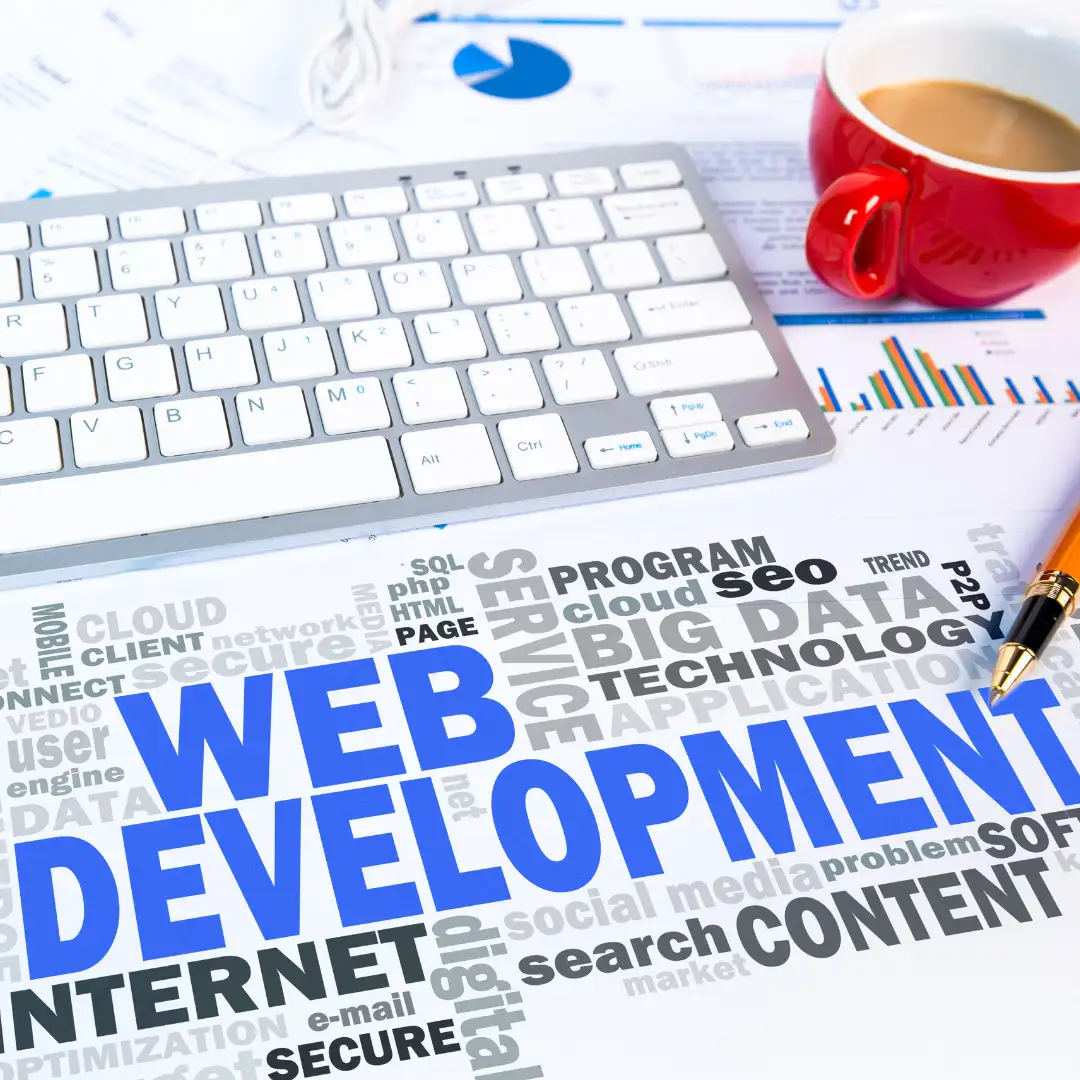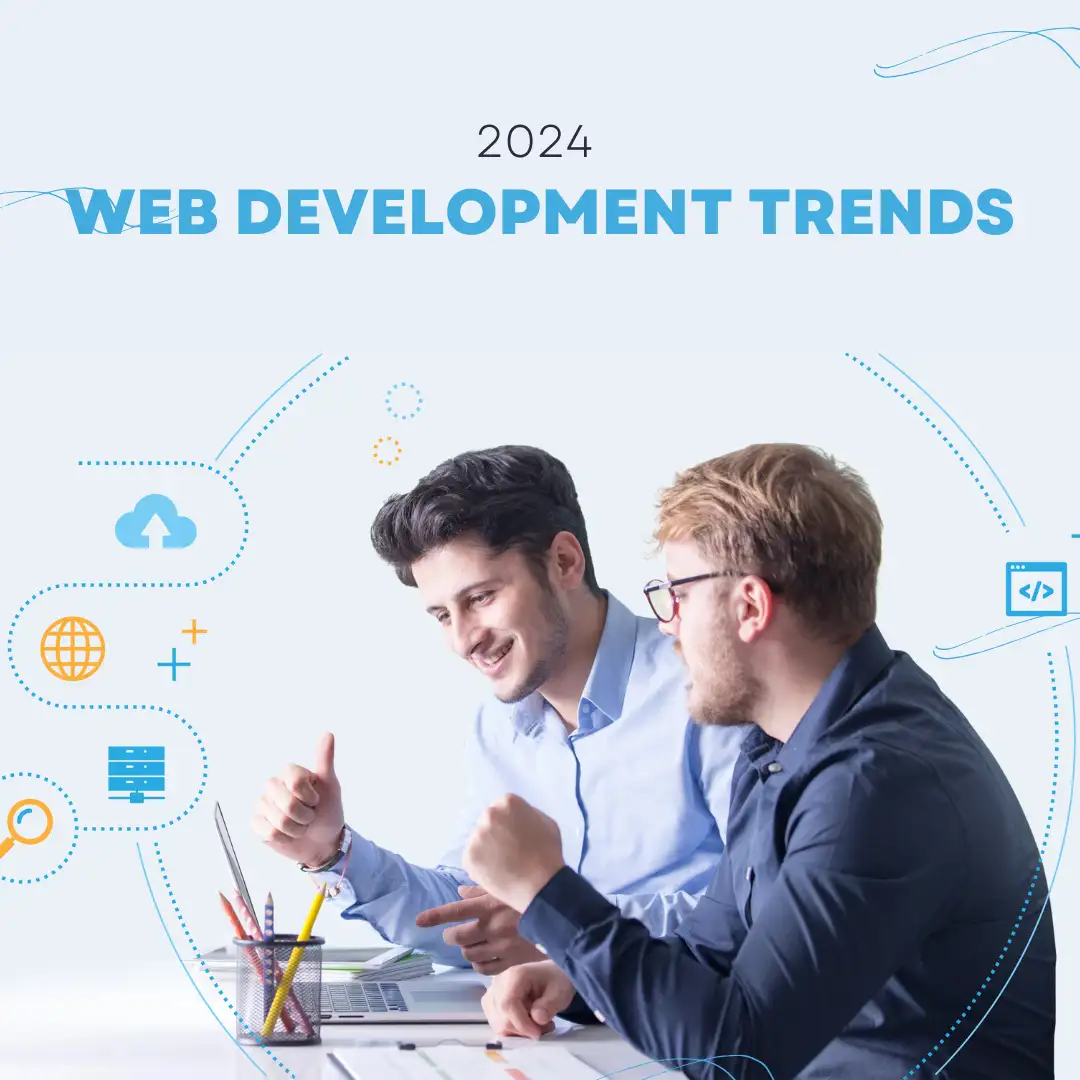2024 Web Development Trends: What’s New and Trending? In the dynamic field of web development, staying up-to-date with the latest trends is crucial. As we anticipate the year 2024, there are several emerging trends that are set to reshape the landscape of website development. From advanced technologies to enhanced user experiences, the future holds immense potential for growth and innovation. For businesses seeking a reliable Website Development company in Jaipur, it is essential to stay informed about these trends and leverage them to stay ahead of the competition. 2024 Web Development Trends: Embracing the Future of User Experience As we step into 2024, the digital landscape is evolving faster than ever, bringing with it a wave of innovative trends poised to redefine how users interact with websites.
With technology advancing at breakneck speed, web developers are not just building sites; they’re crafting immersive experiences that captivate and engage audiences like never before.
From artificial intelligence-driven functionalities to breathtaking visual narratives, this year promises an exciting journey for both creators and users alike. Join us as we explore the top web development trends that will shape user experience in 2024—get ready to embrace the future!
Introduction to 2024 Web Development Trends
The digital landscape is shifting at lightning speed, and 2024 is set to bring a wave of transformative web development trends that will redefine user experiences. As technology evolves, so do the expectations of users who demand seamless interactions, captivating designs, and personalized content. Whether you’re a developer looking to stay ahead or a business owner wanting to enhance your online presence, understanding these emerging trends is crucial for success.
From artificial intelligence integration to immersive virtual reality applications, the future of web development promises exciting possibilities. Join us as we explore what’s new and trending in 2024 Web Development Trends: What’s New and Trending? Get ready to elevate your website’s performance while creating memorable experiences for every visitor!

The Importance of User Experience in Web Development
User experience (UX) is the heartbeat of web development. It shapes how users interact with a website, influencing their satisfaction and engagement levels. A positive UX can transform casual visitors into loyal customers.
In today’s digital landscape, first impressions matter immensely. Users often decide in seconds whether to stay or leave a site based on its usability and design. If navigation feels awkward or content seems cluttered, they’re likely to bounce away.
Moreover, effective UX fosters trust. When users find what they need effortlessly, their confidence in the brand grows. This relationship-building aspect can’t be ignored; it plays a crucial role in customer retention.
Investing time and resources into enhancing user experience ensures that websites not only look great but also perform optimally across devices. It’s about creating seamless interactions that resonate with users long after they’ve left your site.
Top 5 Emerging Technologies in Web Development
Artificial Intelligence is revolutionizing web development. It enhances personalization, making websites smarter and more user-centric. AI algorithms analyze user behavior, providing tailored content and recommendations.
Virtual and Augmented Reality are transforming online experiences. These technologies create immersive environments that captivate users, particularly in e-commerce and entertainment sectors.
Voice User Interfaces are gaining traction as voice search becomes commonplace. Websites optimized for voice commands deliver seamless interactions, appealing to a broader audience.
Progressive Web Apps blend the best of web and mobile apps. They load quickly on any device while offering offline capabilities, enhancing accessibility for all users.
Chatbots and Conversational Interfaces streamline customer service. They provide instant responses to inquiries, improving engagement rates while reducing workload for support teams.
Impact of Mobile-first Approach on Web Development
The mobile-first approach has revolutionized web development. With a growing number of users accessing websites via smartphones, prioritizing mobile design is essential.
This strategy encourages developers to think critically about layouts and functionality before scaling up for larger screens. It fosters creativity in simplifying navigation and optimizing content delivery for smaller displays.
Responsive design becomes more than an option; it’s a necessity. Sites must load quickly on all devices to enhance user experience. A slow-loading page can lead to high bounce rates, directly impacting conversions.
Additionally, search engines like Google have shifted their algorithms to favor mobile-friendly sites. This change means that adopting a mobile-first mindset not only improves usability but also boosts visibility in search results.
Ultimately, embracing this approach can lead to increased engagement and satisfaction among users across various platforms, ensuring they return time after time.
How New Technologies Will Enhance User Experience
New technologies are reshaping the web development landscape, making user experience more immersive and intuitive. Artificial intelligence plays a significant role here, analyzing user behavior to offer personalized content and recommendations.
Virtual and augmented reality provide users with interactive experiences that blur the line between digital and physical worlds. Imagine browsing an online store while virtually trying on clothes or home decor items!
Voice user interfaces are also changing how we interact with websites. Users can now access information hands-free, which enhances convenience for those on-the-go.
Moreover, chatbots streamline communication by providing instant responses to queries. This reduces wait times significantly and keeps users engaged longer.
As these technologies evolve, they create seamless pathways for navigation. Enhanced engagement leads to better retention rates—crucial in today’s competitive online environment.
Challenges and Considerations for Developers in Embracing These Trends
Embracing new web development trends comes with its set of challenges. Developers often face a steep learning curve when integrating cutting-edge technologies like AI and AR into existing frameworks. Keeping up with constant updates can feel overwhelming.
Another concern is resource allocation. Many organizations may struggle to balance the costs of adopting new tools while maintaining current systems. Budget constraints can limit experimentation, hindering innovation.
Compatibility also poses an issue. As developers implement advanced features, ensuring they work seamlessly across various devices and browsers becomes crucial yet complex.
User expectations are evolving rapidly too. Developers must stay ahead of trends to create intuitive interfaces that meet users’ demands for speed and efficiency.
Lastly, security remains a pivotal consideration as more interactive elements are introduced into websites. Protecting user data while enhancing functionality requires careful planning and robust solutions.


